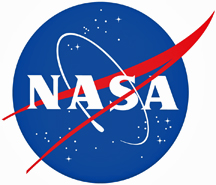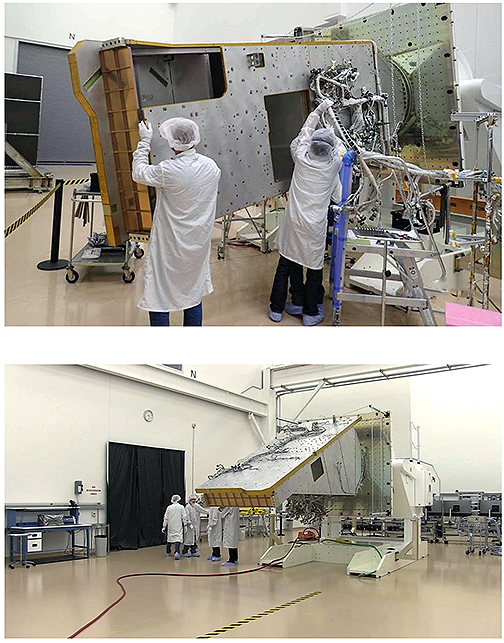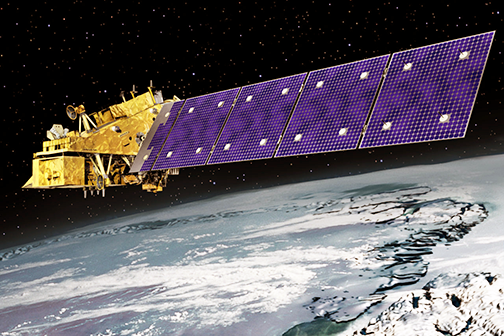

Last month, as satellites fed a steady stream of data into models tracking the paths of Hurricane Florence and Typhoon Mangkhut, the next in a fleet of satellites designed to monitor weather and climate cleared its critical design review, or CDR.

Top photo:
Northrop Grumman Information Systems (NGIS) technicians install flight harnesses onto the JPSS-2 structure on August 9, 2018.
Bottom photo:
The JPSS-2 structure is moved into the NGIS high bay clean room in Gilbert, AZ on August 22, 2018. (courtesy NGIS)
JPSS-2, or Joint Polar Satellite System-2, will join NOAA-20 in a series of polar-orbiting satellites to monitor the Earth’s atmosphere, land and oceans. NASA builds the JPSS series of satellites, and NOAA will operate them.
Passing the CDR, a technical review, means that design and analysis of the satellite system, which includes its ground system and flight plan, is complete, and that the project is ready to continue in its next phases: fabrication, assembly, integration and testing.
The CDR was conducted by a standing review board of 16 members, who are independent of the program and experts in various fields, including electrical and mechanical engineering, weather forecasting and science, ground systems, ground stations, and budgeting and schedule.
Similar to its polar-orbiting cousins, JPSS-2 will scan Earth as the satellite orbits from pole to pole, crossing the equator 14 times a day. In the process, its onboard instruments will snap pictures and capture data that will inform seven-day weather forecasts and extreme weather events. Polar sounders provide roughly 85 percent of the data used in forecast models. But weather is only part of the picture. The spacecraft’s instruments will also tell us about wildfires, volcanoes, atmospheric ozone, ice loss and sea surface temperatures.
The newest spacecraft will be nearly identical to its predecessor, NOAA-20. However, Mandt points out, the science the data feeds are always advancing.
JPSS enables forecasters and scientists to monitor and predict weather patterns with greater accuracy and to study long-term climate trends by extending the more than 30-year satellite data record.

Artistic rendition of the JPSS-2 satellite on orbit.
JPSS is a collaborative program between the National Oceanic and Atmospheric Administration (NOAA) and its acquisition agent, the National Aeronautics and Space Administration (NASA). For the JPSS-2, -3 and -4 satellites, NOAA is responsible for managing and operating the JPSS program, and developing the ground segment, while NASA is responsible for developing and building the JPSS instruments, spacecraft, and providing launch services.
Executive Comments
Greg Mandt, NOAA director of the Joint Polar Satellite System program at NASA's Goddard Space Flight Center, Greenbelt, Maryland, said the satellite will measure the temperature and moisture of our atmosphere, and the knowledge of that is really what drives the accuracy of weather forecasts. Every year, there will be new applications discovered. Even if the instruments are the same, the use of the data will continue to expand, and we’ll find new ways to use it to solve problems.
Heather Kilcoyne, the NOAA ground segment project manager for JPSS at NASA Goddard In our ground segment design for JPSS-2, added that the agency has shown that an understanding of what changes are needed, and NOAA is well prepared to go to implementation. It’s not enough to just have a satellite up there. NOAA's design covers the changes needed end to end to ensure our products actually get used by forecasters and researchers.

